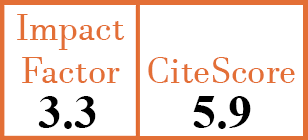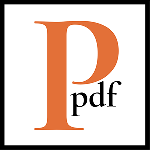Full Papers
What could we learn from the sub-analysis of a single nation cohort in a worldwide study? Lessons from the results observed in the Italian cohort of the GO-MORE trial
R. Giacomelli1, P. Ruscitti2, S. Bombardieri3, G. Cuomo4, S. De Vita5, M. Galeazzi6, M. Mecchia7
- Rheumatology Unit, Department of Biotechnological and Applied Clinical Science, School of Medicine, University of L'Aquila, Italy. roberto.giacomelli@cc.univaq.it
- Rheumatology Unit, Department of Biotechnological and Applied Clinical Science, School of Medicine, University of L'Aquila, Italy.
- Rheumatology Unit, University of Pisa, Italy.
- Rheumatology Unit, Second University of Naples, Italy.
- Rheumatology Clinic, Department of Medical and Biological Sciences, University Hospital 'Santa Maria della Misericordia', Udine, Italy.
- Interdepartmental Research Centre of Systemic Autoimmune and Autoinflammatory Diseases, University of Siena, Italy.
- MSD Italy, Rome, Italy.
on behalf of the Italian GO-MORE Investigators
CER9655
2017 Vol.35, N°4
PI 0623, PF 0629
Full Papers
Free to view
(click on article PDF icon to read the article)
PMID: 28598774 [PubMed]
Received: 13/06/2016
Accepted : 03/01/2017
In Press: 06/06/2017
Published: 13/07/2017
Abstract
OBJECTIVES:
GO-MORE Trial investigated the use of Golimumab (GLM) in 3280 rheumatoid arthritis (RA) patients worldwide. At present, the burden of arthritis is greater in poorer countries than in developed countries due to socioeconomic disparities, thus suggesting the usefulness of subgroup investigations. We aimed to evaluate GLM as add-on therapy for RA patients in the Italian cohort of GO-MORE trial and compared the clinical characteristics between Italian patients and the enrolled patients worldwide.
METHODS:
Ninety-eight Italian patients with active RA, fulfilling the 1987 ACR criteria were enrolled. Statistical analyses were performed to assess: i. the differences in baseline characteristics; ii. the efficacy after 6 months; between Italian and Rest of the World GO-MORE populations.
RESULTS:
Compared to the worldwide population, Italian patients showed a lower value of disease activity and a significantly short disease duration. Unlike the worldwide patients, the large majority of Italian patients received biologic therapy after the failure of the first synthetic DMARD and were not treated by high methotrexate dosage. After 6 months of GLM treatment, no differences were observed in the therapeutic response. Italian patients reported a positive autoinjection experience mirroring the worldwide results.
CONCLUSIONS:
The analysis of the Italian GO-MORE subset confirms that differences among patients may be shown, depending on different approaches in different health systems. GLM in the Italian patients showed a favourable benefit/risk profile and the positive autoinjection experience may help with patient’s compliance and survival of the treatment.


